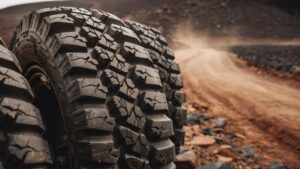Imagine gliding over rocky trails, feeling every bump and dip seamlessly absorbed by your full suspension bike. It’s exhilarating, isn’t it?
Yet, to keep that smooth ride alive, your bike needs regular TLC. Proper maintenance isn’t just about ensuring safety; it’s about preserving the thrill and adventure that your bike offers. When you take charge of your bike’s care, you’re investing in unforgettable rides and unparalleled experiences.
Curious about how you can keep your bike in top shape without spending hours on it? This guide is your ally, offering easy tips and tricks that fit right into your routine. Dive in, and discover how simple steps can make a big difference in your biking adventures.
Benefits Of Regular Maintenance
Regular maintenance of a full suspension bike ensures smooth rides and enhances bike longevity. It prevents costly repairs and keeps performance at its peak. Well-maintained bikes provide safer and more enjoyable cycling experiences, making each ride worthwhile.
Regular maintenance of your full suspension bike isn’t just a chore; it’s a way to enhance your riding experience and extend the life of your bike. Taking the time to maintain your bike ensures that every ride is smooth, safe, and enjoyable. Plus, it saves you money in the long run by preventing costly repairs and replacements.
Consistent Performance
Routine maintenance keeps your bike running at its best. When you regularly check and tune your suspension, brakes, and gears, you ensure optimal performance. This means more confidence on the trails and better handling on challenging terrains.
Safety First
Safety is paramount when riding, and regular maintenance plays a huge role in it. A well-maintained bike reduces the risk of accidents caused by faulty components. Wouldn’t you rather ride with peace of mind knowing your brakes will respond instantly?
Cost-effective
Regular check-ups can save you money. Addressing small issues early prevents them from becoming major problems requiring expensive repairs. Think of it like changing the oil in your car; small investments now avoid bigger costs later.
Extended Lifespan
A bike that’s well cared for lasts longer. By keeping your bike clean and lubricated, you prevent rust and wear. It’s like giving your bike a longer lease on life, allowing you more adventures together.
Increased Resale Value
If you ever decide to sell your bike, maintenance records can increase its value. Buyers are more likely to purchase a bike with a well-documented history. Wouldn’t you pay more for a bike you know has been well cared for?
Personal Satisfaction
There’s a special satisfaction in knowing your bike is in top condition because of your efforts. It’s rewarding to know you’re taking care of your gear and, in turn, enhancing your riding experience. Plus, it makes you feel more connected to your bike.
In short, regular maintenance isn’t just about preventing problems; it’s about making your biking experience the best it can be. So, next time you think about skipping that maintenance session, remember the benefits it brings to your ride.
Essential Tools For Maintenance
Maintaining a full suspension bike is crucial for smooth rides. Proper tools ensure each part functions well. Without the right tools, maintenance becomes difficult and inefficient. This guide lists essential tools needed for effective bike upkeep.
1. Allen Wrenches
Allen wrenches are vital for adjusting bolts. They fit snugly into hexagonal bolt heads. These are used in most bike components. A set with different sizes is ideal for various tasks.
2. Torque Wrench
A torque wrench helps in tightening bolts correctly. Over-tightening can damage components. Using a torque wrench prevents this. It ensures bolts are tightened to the right degree.
3. Chain Cleaner
Chains collect dirt and grime easily. A chain cleaner removes this build-up. It helps maintain smooth gear shifting. Regular cleaning extends chain life, too.
4. Shock Pump
The shock pump adjusts air pressure in your bike’s suspension. Proper pressure ensures a comfortable ride. It also enhances control and stability. A shock pump is essential for suspension maintenance.
5. Tire Levers
Tire levers assist in removing tires from rims. They make tire changes simple. These tools are small but very effective. Always have a pair handy for quick tire repairs.
6. Bike Stand
A bike stand holds the bike steady during maintenance. It frees up your hands. This makes tasks like cleaning and repairs easier. A sturdy stand is a worthwhile investment.
7. Lubricant
Lubricant reduces friction between moving parts. It protects against rust and wear. Regular application ensures smooth operation. Choose a lubricant suitable for your bike’s conditions.
Inspecting The Suspension System
Keeping your full suspension bike in top condition requires regular checks. Inspecting the suspension system is crucial for a smooth ride. This involves looking for problems that might affect performance. Let’s explore some key areas to focus on.
Signs Of Wear And Tear
Check for visible damage on your suspension components. Scratches, dents, or bends can impact function. Examine the pivot points and mounting hardware. Loose or damaged parts need attention. Listen for unusual noises while riding. Clicking or creaking sounds may indicate issues. Feel the bike’s movement during use. If it feels sluggish, inspection is necessary.
Checking For Leaks
Inspect the suspension for any oil or fluid leaks. Leaks can reduce efficiency and require fixing. Look closely at the seals and joints. Wet or oily areas suggest a problem. Clean the suspension parts to spot leaks easily. Use a dry cloth to wipe them down. After cleaning, run a finger along seals. Any residue signals a potential leak.
Lubrication Techniques
Proper lubrication keeps full suspension bikes running smoothly. Focus on the pivot points and the chain. Use high-quality bike-specific lubricant for best results. Regular maintenance prevents wear and extends bike life.
Maintaining your full suspension bike is crucial for a smooth and enjoyable ride. Proper lubrication techniques can make a world of difference in your biking experience. Let’s dive into the essentials of choosing the right lubricant and the best application methods to keep your bike running effortlessly.
Choosing The Right Lubricant
Selecting the right lubricant is a vital step in bike maintenance. Not all lubricants are created equal, and using the wrong type can lead to unwanted build-up or ineffective protection.
Consider the environment where you ride most frequently. For dusty trails, a dry lubricant is ideal as it doesn’t attract dirt. On the other hand, wet lubricants are perfect for rainy or muddy conditions since they provide a lasting protective layer.
Check product labels for compatibility with your bike components. Some lubricants are specially formulated for chains, while others are better suited for suspension pivots. Always keep a few different types on hand to match various conditions.
Application Methods
Applying lubricant correctly ensures maximum efficiency and longevity of your bike parts. Begin by thoroughly cleaning the area to remove any old lubricant and debris. A clean surface allows new lubricant to adhere effectively.
Use a small brush or cloth to apply a thin layer of lubricant. Be mindful not to over-apply, as excess can attract dirt and grime. Focus on key areas such as the chain, suspension pivots, and derailleur.
After application, let the lubricant sit for a few minutes to penetrate. Then, wipe off any excess with a clean cloth. This prevents build-up that can hinder performance.
Do you remember the last time you skipped a lubrication session? Perhaps you noticed a squeaky chain or stiff suspension. Regular lubrication can prevent these issues and keep your rides enjoyable.
Taking time to lubricate your bike not only enhances performance but also prolongs the life of your components. How often do you incorporate lubrication into your bike maintenance routine? A well-lubricated bike is a happy bike, leading to a happier rider.
Cleaning The Frame And Components
Clean the frame and components of your full suspension bike regularly to prevent dirt buildup and maintain performance. Use a soft cloth and mild detergent to wipe down surfaces, ensuring longevity and smooth rides. Pay attention to hard-to-reach areas where grime tends to accumulate.
Cleaning the frame and components of your full suspension bike is crucial to maintaining its performance and extending its lifespan. Dirt, mud, and grime can accumulate over time, affecting the bike’s efficiency and potentially leading to costly repairs. Regular cleaning ensures your bike stays in top shape, ready for your next adventure. But how do you clean effectively without damaging your bike? Let’s dive into some practical solutions and tips.
Effective Cleaning Solutions
Choosing the right cleaning solution can make all the difference in maintaining your bike. Mild soap and water are often enough for a thorough clean. You can also use a specialized bike cleaner that is gentle on frames and components.
A soft brush can help reach those hard-to-clean areas. Ensure you rinse thoroughly to avoid soap residue, which can attract more dirt.
Avoiding Common Mistakes
It’s easy to make mistakes when cleaning your bike, especially if you’re in a hurry. Avoid using high-pressure hoses, as they can force water into sensitive areas, causing rust and corrosion.
Be cautious with harsh chemicals that might strip the protective coating of the frame. It’s best to stick with solutions specifically designed for bikes.
Are you wiping with a dry cloth? This can scratch the surface. Always use a clean, damp cloth for the final wipe-down.
Remember the time you cleaned your bike with a pressure washer, only to find rust a few weeks later? It’s a lesson learned. Taking a little extra time to clean properly can save you lots of hassle in the long run.
By following these tips, you’ll not only keep your bike looking great but also ensure it’s functioning at its best. What other cleaning strategies have worked for you? Share your insights in the comments below!

Adjusting Suspension Settings
Adjusting suspension settings is crucial for full suspension bike maintenance. Fine-tune the settings for a smoother ride. This enhances control and comfort on various terrains. Proper adjustment ensures the bike performs optimally, providing an enjoyable biking experience.
Adjusting suspension settings on a full suspension bike is like tuning a musical instrument—you need to get it just right to enjoy the ride. Whether you’re tackling rocky trails or smooth paths, properly adjusted suspension can dramatically enhance your biking experience. It’s all about finding the balance between comfort and control. The settings you choose can make or break your journey, so let’s dive into the specifics with a focus on preload and rebound settings, and fine-tuning for different terrains.
Preload And Rebound Settings
Adjusting preload and rebound settings is a crucial part of maintaining your bike’s suspension. Preload affects how much your suspension compresses under your weight. It’s like setting the stage for your ride, ensuring your bike is responsive when the terrain gets tough.
Imagine you’re riding through a series of bumps. If the preload is too soft, the bike might bottom out, causing discomfort and loss of control. Conversely, too firm and you’ll feel every jolt, losing the smooth flow. The key is to adjust it so your bike feels stable yet flexible.
Rebound settings control how fast the suspension returns after compression. This is essential for keeping your wheels on the ground, especially in rapid succession bumps. A quick rebound can make your bike feel jittery, while a slow one can make it sluggish.
Try tweaking these settings gradually. Adjust, ride, and observe. You’ll soon find the sweet spot that feels like an extension of your body.
Fine-tuning For Terrain
Consider the terrain you’re about to conquer. Are you hitting rocky trails, sandy paths, or smooth roads? Each requires a different suspension setup for optimal performance.
On rocky trails, you might want a softer preload to absorb impact without losing control. Set the rebound slightly slower to maintain traction and stability over uneven surfaces.
On smoother roads, a firmer preload could enhance speed and efficiency, while a faster rebound setting helps keep your momentum steady.
Experiment with these adjustments. Take notes on how each change impacts your ride.
You’ll gain insights into what works best for you.
Isn’t it fascinating how a few tweaks can transform your biking experience?
Remember, maintenance isn’t just about fixing problems; it’s about enhancing your adventure. So next time you prepare for a ride, ask yourself: “Are my suspension settings ready for the journey?”
Brake System Maintenance
Maintaining your bike’s brake system is crucial for safety and performance. Just like any part of your full suspension bike, brakes need regular care to function at their best. If you’ve ever experienced the heart-pounding moment of unresponsive brakes during a downhill ride, you know exactly why this is important. Let’s dive into some practical tips to keep your brakes in top shape.
Inspecting Brake Pads
Brake pads are the heart of your bike’s braking system. Regular inspection ensures they’re not worn down to dangerous levels. Check the thickness of your brake pads often, especially if you ride frequently or in muddy conditions. A quick tip: if the pad is thinner than a nickel, it’s time for a replacement.
Don’t wait until you hear that dreaded screeching noise. That sound means metal is meeting metal, and it’s damaging your bike. Keeping your brake pads in good condition is a simple way to avoid costly repairs later.
Hydraulic Vs Mechanical Systems
Understanding your brake system type is key. Hydraulic systems use fluid to transfer force, offering smooth and powerful braking. They’re great for technical trails and steep descents. However, they require special attention to fluid levels and potential leaks.
Mechanical systems, on the other hand, use cables to actuate the brakes. They are simpler and easier for DIY maintenance. If you’re less familiar with bike mechanics, mechanical brakes might be your best bet. Always ensure cables are taut and free of frays.
Consider your riding style and environment. Are you tackling intense trails or enjoying leisurely rides? Your brake system should match your needs. Have you ever found yourself on a new trail with brakes that just don’t cut it? Reflect on your system choice and maintenance routine.
Isn’t it fascinating how a simple component can significantly impact your biking experience? Regular brake maintenance isn’t just about safety; it’s about enhancing your ride. What steps will you take to keep your brakes reliable and responsive?
Drivetrain Care And Adjustments
The drivetrain is the heart of your full suspension bike. Keeping it in top shape ensures smooth rides and longevity. Regular care and adjustments prevent wear and boost performance. Proper maintenance also helps avoid unexpected repairs. Focus on essential components like the chain and derailleur. Fine-tuning gear shifting enhances your biking experience. Let’s dive into these crucial aspects.
Chain And Derailleur Maintenance
The chain transfers power from your pedals to the wheels. Dirt and rust can slow you down. Cleaning your chain regularly keeps it efficient. Use a brush to remove grime. Lubricate it to reduce friction. A well-maintained chain lasts longer.
Derailleurs guide your chain between gears. Check them for alignment. Misaligned derailleurs cause poor gear shifting. Adjust them to ensure smooth transitions. Regular inspection prevents costly damage.
Gear Shifting Optimization
Efficient gear shifting is key to a smooth ride. Adjust your bike’s shifters for precise gear changes. Tighten loose cables to improve response. Test gear transitions on a stand. Make fine adjustments for optimal performance.
Listen for unusual sounds during shifts. Clicking or grinding noises may indicate a problem. Address these issues promptly. Proper gear adjustment enhances your biking experience.
Tire And Wheel Inspection
Inspecting tires and wheels is crucial for full suspension bike maintenance. Check for wear, cracks, and loose spokes. Ensure wheels spin smoothly for a safe ride.
When it comes to full suspension bike maintenance, tire and wheel inspection is crucial. It’s not just about ensuring your ride is smooth; it’s about safety and performance. Regular checks can prevent unexpected punctures and ensure your wheels spin efficiently.
Checking your tire pressure is the first step. Proper inflation keeps your ride smooth and safe. Use a pressure gauge to measure this accurately. A thumb test can give you a quick idea, but gauges are precise.
Think about your last ride. Did you feel the terrain more than usual? It might be low tire pressure. Adjust it according to the recommended PSI range on the tire sidewall. This simple check can make a world of difference.
Checking Tire Pressure
A tire’s pressure affects grip and comfort. Too low, and you’ll struggle with handling. Too high, and you risk a bumpy ride.
Invest in a quality pressure gauge. This tool will give you accurate readings. Make it a habit to check pressure before every ride.
What’s your typical terrain? Adjust your tire pressure accordingly. Softer for trails, firmer for road rides.
Spoke And Rim Examination
Spokes and rims are the backbone of your wheels. Loose spokes can lead to uneven tension, affecting stability.
Run your fingers along the spokes. Do they feel tight? If not, a spoke wrench will help tighten them.
Examine rims for dents or damage. A slight dent can lead to wobbles. Catching these early can save you from future hassles.
Have you ever noticed a wobble in your wheel? It could be an issue with the rim or spokes. Fix it now to avoid bigger problems later.
Engage in these simple inspections regularly. Your bike will thank you with a smoother, safer ride. What steps will you add to your routine maintenance?
Professional Servicing
Professional servicing keeps your full suspension bike in top shape. It ensures smooth rides and prolongs bike life. Regular maintenance checks and adjustments enhance performance and safety on every trail.
Maintaining a full suspension bike can be a rewarding experience, but sometimes, you need a professional touch. Regular upkeep is essential, yet certain tasks require expertise beyond the average rider’s skill set. Professional servicing ensures your bike performs at its best, giving you confidence during those exhilarating rides. But how do you know when it’s time to call in the experts? And once you decide, how do you choose the right service center?
When To Seek Expert Help
Even if you’re handy with tools, there are times when professional expertise is crucial.
Consider seeking expert help when your bike makes unusual noises you can’t fix.
Persistent creaks or clicks might indicate issues with the suspension system or bearings.
Another sign is when adjusting the suspension doesn’t improve your ride quality.
If your bike feels unstable or unpredictable, a professional can pinpoint the problem.
Think about your own experiences: Have you ever tried fixing something only to make it worse?
Sometimes, it’s best to let a skilled technician handle complex repairs.
These professionals have the tools and knowledge to tackle intricate issues.
Ultimately, they ensure your bike is safe and performs optimally.
Choosing A Reliable Service Center
Finding a trustworthy service center is like choosing a good friend.
You want someone who understands your needs and has a solid reputation.
Start by asking fellow riders for recommendations.
Online reviews can also be helpful; they give insights into previous customer experiences.
Look for centers with certified technicians who specialize in full suspension bikes.
A reliable service center should offer clear pricing and honest advice.
Don’t hesitate to ask questions about their processes and turnaround times.
Think about a time when transparency made you trust a service provider.
Wouldn’t you appreciate the same clarity when it comes to your bike?
Ultimately, a good service center will treat your bike as if it were their own.
Choosing wisely ensures your bike gets the care it deserves, keeping your rides thrilling and safe.
Frequently Asked Questions
How To Maintain A Full Suspension Bike?
Regularly clean and lubricate your bike, especially the chain and suspension components. Inspect suspension settings and adjust as needed. Check for loose bolts or damaged parts. Maintain proper tire pressure and keep the drivetrain clean. Schedule professional tune-ups for optimal performance.
Are Full Suspension Bikes Hard To Maintain?
Full suspension bikes require more maintenance than hardtail bikes. Components like shocks and pivots need regular checks. Frequent cleaning and lubrication are essential. Inspect for wear and tear to ensure optimal performance. Proper maintenance extends the bike’s lifespan and keeps rides smooth and enjoyable.
What Is The Maintenance On Bike Suspension?
Regularly clean and inspect your bike suspension for damage. Lubricate moving parts and check seals for leaks. Adjust settings based on riding conditions. Perform a full service annually or after heavy use. Proper maintenance ensures smoother rides and prolongs suspension life.
How Much Does It Cost To Service A Full Suspension Bike?
Servicing a full suspension bike typically costs between $100 and $300. Prices vary based on location and service complexity. Basic tune-ups are cheaper, while comprehensive services involving shock and fork maintenance are more expensive. Regular maintenance ensures optimal performance and longevity of the bike.
Always check local shops for specific pricing.
Conclusion
Proper care keeps your full suspension bike running smoothly. Regular checks prevent costly damage. Clean your bike after every ride. Pay special attention to the suspension parts. Lubricate moving parts to reduce wear. Replace worn-out components promptly. Tighten bolts and screws for safety.
A well-maintained bike lasts longer and performs better. Your rides feel smoother and more enjoyable. Invest time in maintenance. Enjoy every adventure with confidence. Stay safe on the trails. Happy riding!








